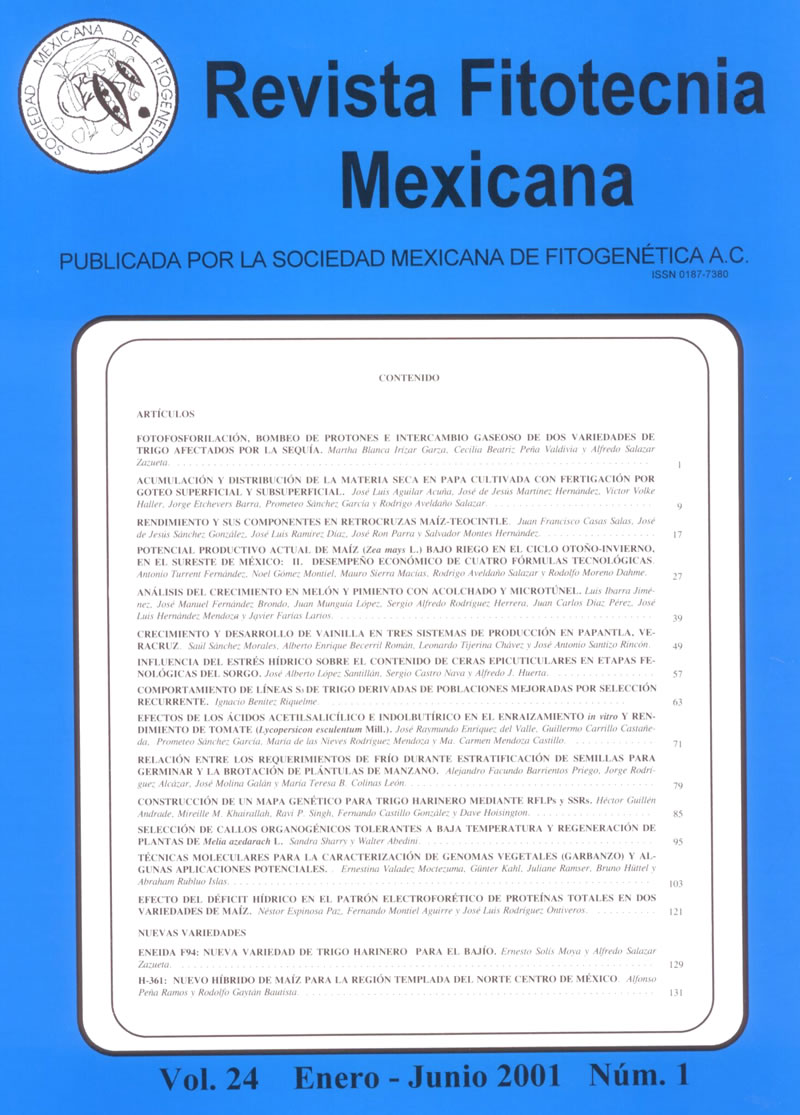CONSTRUCTION OF A RFLPs AND SSRs MAP FOR BREAD WHEAT
Main Article Content
Abstract
A population of 117 F6 recombinant inbred lines (RILs) derived from the crossing of cultivars Frontana and INIA66, was analyzed with the aid of molecular markers in order to construct a genetic map. This map will be utilized for QTL determination of those complex traits segregating in the population. A second objective was to determine the joint potential of two types of molecular markers: RFLPs and SSRs for the analysis of a species with a complex genome, such as the one of bread wheat (Triticum aestivum L. em. Thell.). The parental genotypes were analyzed with 822 RFLPs probes and 68 primers. In spite of its number, the SSRs showed a larger number of polymorphic loci (40 %) than the RFLPs (29 %). The information generated with the analysis of the 117 RILs with 158 RFLPs probes and 27 SSRs resulted in 26 linkage groups. The specificity of the SSRs was important for the adscription of markers to linkage group where they were clustered. The results showed that the combination of different types of molecular markers is a good strategy to avoid the problem of a low level of polymorphisms when a single type of markers is utilized in species such as bread wheat.

